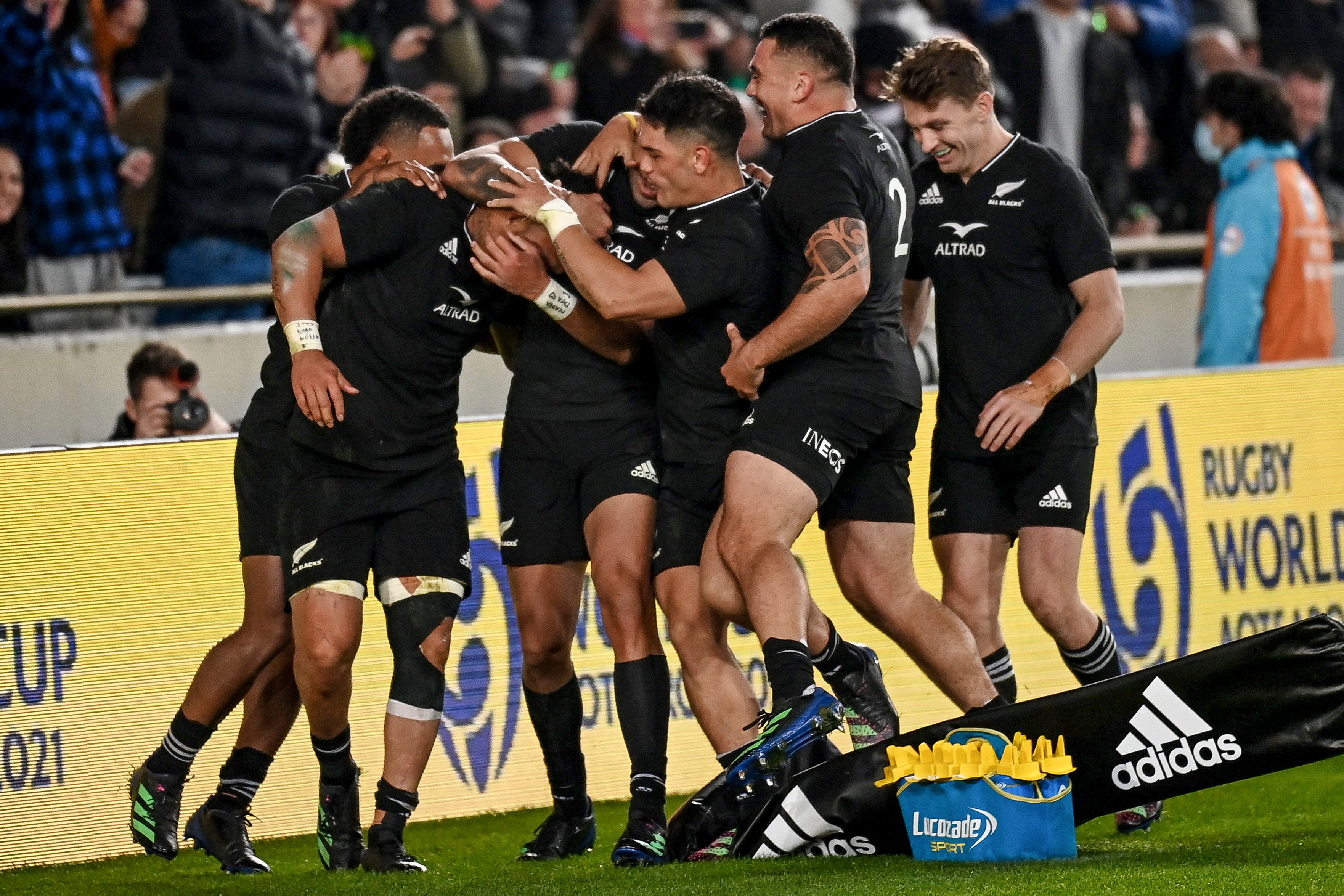Why do New Zealand do the haka and what do the words mean in English?
New Zealand perform the Haka at the Stade de France
Sign up to our free sport newsletter for all the latest news on everything from cycling to boxing
Sign up to our free sport email for all the latest news
Thanks for signing up to the
Sport email
The haka is one of rugby’s best known traditions, with the ceremonial Maori dance performed pre-match by New Zealand rugby sides before international fixtures.
Haka were traditionally performed for a variety of social occasions and functions by the Maori, the indigenous population of the country, to represent a display of a tribe’s pride, strength and unity.
Usually performed by a group, they are now performed to welcome distinguished guests or acknowledge an occasion, but it is for their use in rugby that haka are best known.
- New Zealand v Argentina LIVE: Rugby World Cup 2023 latest updates as All Blacks hunt semi-final win
In rugby union, New Zealand’s All Blacks, Black Ferns and age group sides all lay down the challenge to the opposition, while the nation’s rugby league sides do similarly, with the haka generally performed after the anthems and before kick off.
The All Blacks’ use is believed to date back to 1888, when a “New Zealand Native” side toured the British Isles.
Recommended
The All Blacks have two haka that they regularly perform: the “Ka Mate” is best known, while the “Kapa o Pango” has been used since 2005 having been written for and about the All Blacks.
Both are typically led by a player of Maori heritage, with scrum half Aaron Smith currently the most common occupier of the role for Ian Foster’s side.
Of the competing nations at this year’s men’s Rugby World Cup, Fiji (the Cibi), Tonga (the Sipi Tau) and Samoa (the Siva Tau) also perform ceremonial dances.
While these are being performed, no player from the team performing the challenge may cross their own 10m line and no player from the team receiving the challenge may cross the halfway line. It is not mandatory for the team receiving the challenge to face it.
Where both teams are performing challenges, one team may not cross half way and the other team may not cross their own 10m line – so the teams are always separated by at least ten metres.
What do the words to New Zealand’s haka mean in English?
“Ka Mate”
English:
I die! I die!
I live! I live!
I die! I die!
I live! I live!
This is the hairy man, who fetched the sun causing it to shine!
One upward step! Another upward step!
One last upward step! Then step forth!
Into the sun that shines!
Maori:
Ka mate! ka mate!
Ka ora! ka ora!
Ka mate! ka mate!
Ka ora! ka ora!
Tēnei te tangata pūhuruhuru, nāna nei i tiki mai whakawhiti te rā!
Hūpane! Hūpane!
Hūpane! Kaupane!
Whiti te rā!
Hi
“Kapa O Pango”:
English:
Let me go back to my first gasp of breath
Let my life force return to the earth
It is New Zealand that thunders now
And it is my time! It is my moment!
The passion ignites!
This defines us as the All Blacks
And it is my time! It is my moment!
The anticipation explodes!
Feel the power
Our dominance rises
Our supremacy emerges
To be placed on high
Silver fern! All Blacks!
Silver fern! All Blacks!
Ha!
Maori:
Taringa whakarongo!Kia rite! Kia rite! Kia mau!
Hi!
Kia whakawhenua au i ahau!
Hi, aue! Hi!
Ko Aotearoa, e ngunguru nei!
Hi, au! Au! Aue, ha! Hi!
Ko kapa o pango, e ngunguru nei!
Hi, au! Au! Aue, ha! Hi!
I ahaha!
Ka tu te ihi-ihi
Ka tu te wanawana
Ki runga i te rangi, e tu iho nei, tu iho nei, hi!Ponga ra!
Kapa o pango! Aue, hi!Ponga ra!
Kapa o pango! Aue, hi!Ha!
Source: Read Full Article



